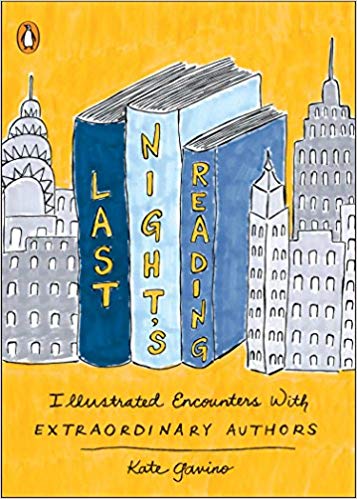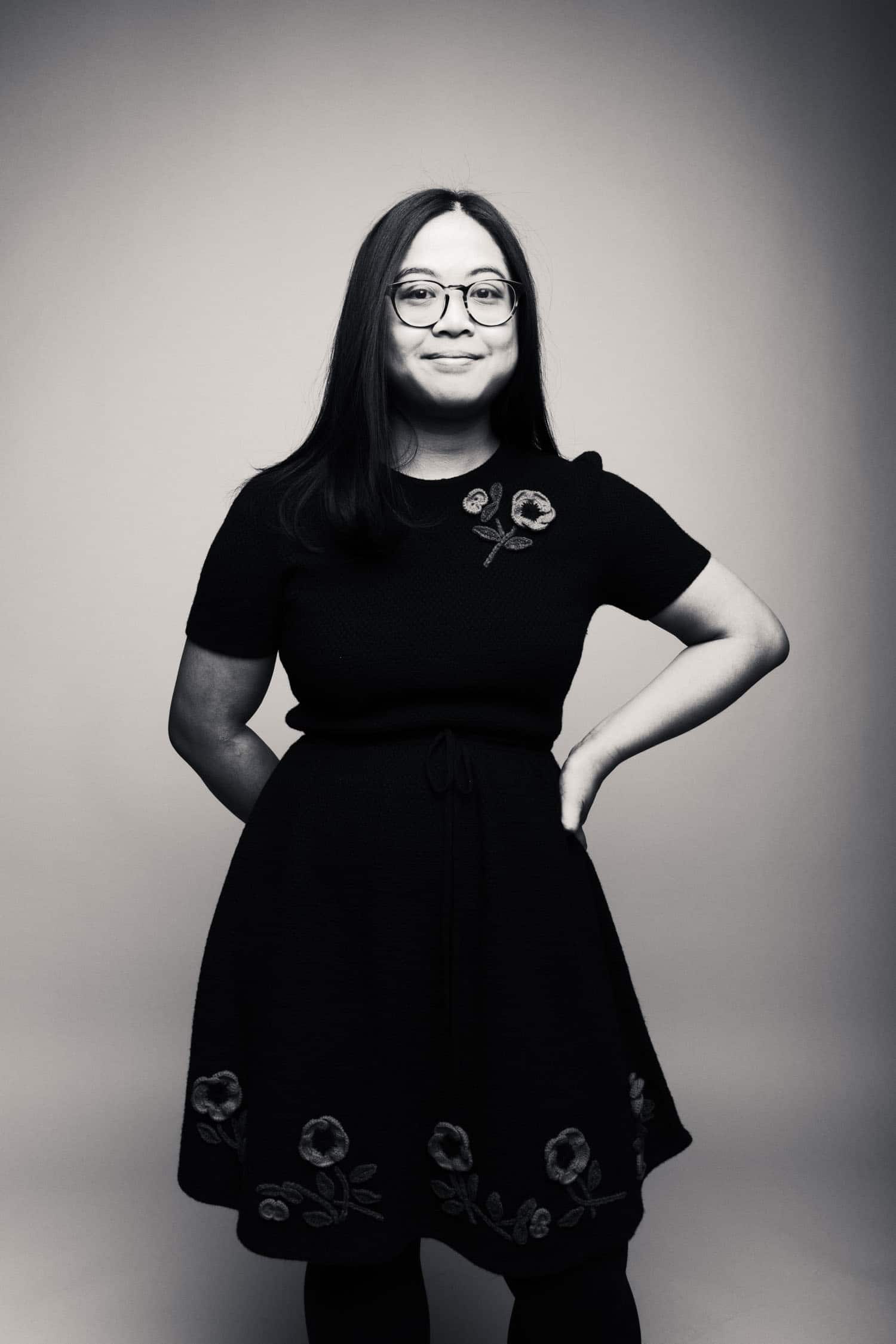Kate Gavino is an author and illustrator, whose books include Last Night’s Reading and Sanpaku. You can find her work at Powell’s, your local bookstore, or you local library. She is interviewed here by APALA member Jaena Rae Cabrera.
Jaena Rae Cabrera (JRC): Please introduce yourself and briefly describe your literary work and career path to date.
Kate Gavino (KG): I’m an author and illustrator currently living in Paris, France. I was born in Houston, Texas, and then for college I moved to New York City, where I lived for almost a decade. While I was there, I took advantage of all the free literary events there and started a blog of author portraits called Last Night’s Reading. In 2015 that project was turned into a book published by Penguin. Then in 2018 I published my second book, Sanpaku, through BOOM! Studios.
JRC: How has your own identity as an Asian American influenced your writing? The diversity of your readership?
KG: My second book, “Sanpaku,” is a love letter to my Lola, who I was very close to growing up. I have a very large, close Filipino family, and she epitomized the warm, welcoming, occasionally overbearing (but lovingly so!) feeling I associate with my childhood. I find that most of my work addresses some aspect of growing up or living as a Filipino American since, like a lot of second generation kids, I was often torn between pride and shame for my family’s culture. As an adult I have a deeper appreciation and love for my heritage, but I have to reckon with how that wasn’t always the case growing up.

JRC: What drew you to poetry/short stories/fiction/nonfiction?
KG: I always loved writing and drawing, but it wasn’t until after college that I started making comics and graphic novels. I started reading novels at a very young age, and I’ve watched cartoons and read comics for just as long. For both forms, I loved and still love stories about young women written by authors who take their lives and thoughts seriously, such as Little Women, Persepolis, The Diary of a Teenage Girl, The Baby-Sitters Club, Sailor Moon, and anything by Edith Wharton and Anita Brookner.
JRC: Can you describe an instance when libraries and/or archives played a beneficial role in your work?
KG: Going to the library was the highlight of my week as a kid, where I would check out stacks of Baby-Sitters Club and Sweet Valley books, alongside serious novels by Amy Tan and Mona Simpson (which I didn’t always fully understand but still enjoyed). As an adult, I worked in the marketing department for the Brooklyn Public Library, the fifth largest system in the US. It was there I saw how wide a reach libraries have in their communities. We worked with children, seniors, researchers, immigrants, artists, and more. It was truly satisfying work, and it instilled within me a lifelong appreciation for what libraries offer to their communities.
JRC: What advice would you give librarians and information professionals, especially those from diverse backgrounds who work with diverse populations, to promote literacy and readership?
KG: Be open-minded when it comes to the material. Novels and traditional books are great, but there’s also great storytelling in comic books, graphic novels, manga, screenplays, and more.

JRC: What advice would you give young professionals, especially those from diverse backgrounds, who are interested in a career in poetry or writing in general?
KG: Don’t wait until you’ve published a book or won awards to call yourself a writer or poet. The moment you write something or draw a panel, you’re a writer! From then on, it’s on you to make sure you hit your writing goals and seek out mentors, internships, or other opportunities. Once you find a community, you’ll find that supporting and helping others is a great way to carve out your own identity as an artist.
JRC: With grants and financial assistance being very limited, how do you make your work so readily available to download online for free? What are some financial resources that you use to support your writing?
KG: As a freelancer, I try to make sure I am being paid a fair amount for my work, as that allows me to release other work of my own choosing for free, ie: on Instagram or Tumblr. Some great freelance resources I use include Study Hall, Writers of Color, and various Binders groups on Facebook.
Editing assistance provided by Anastasia Chiu.

